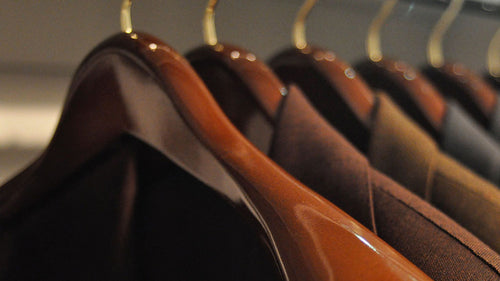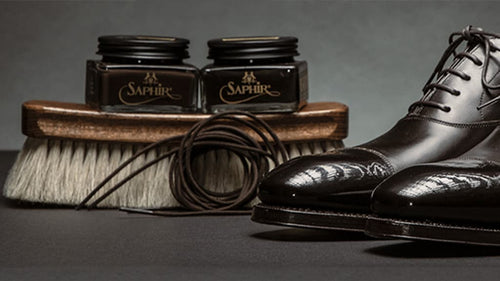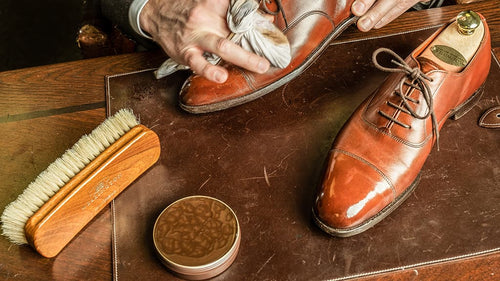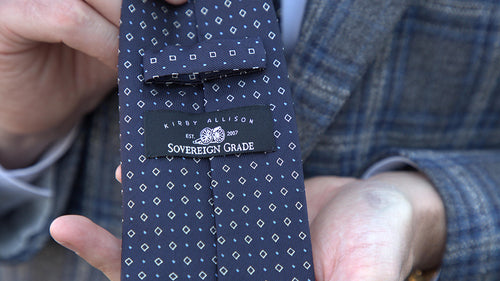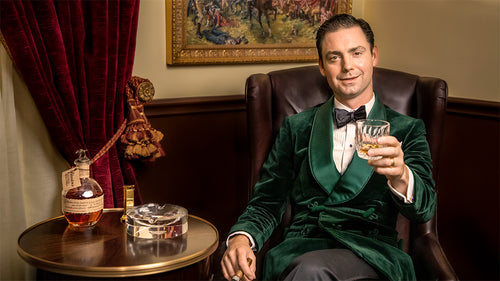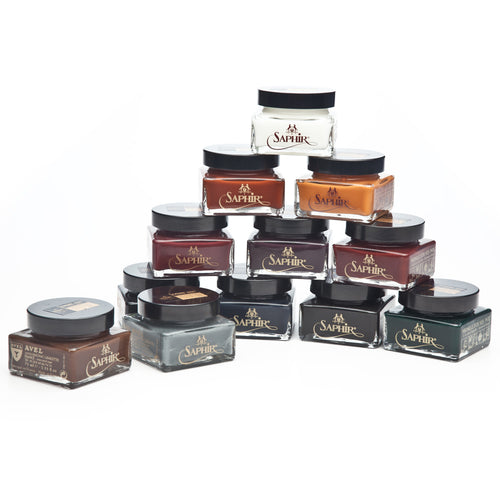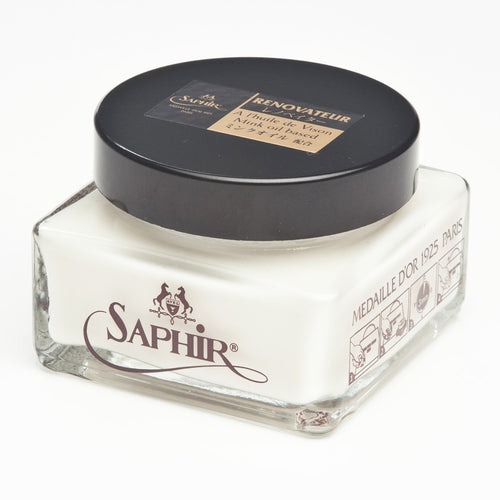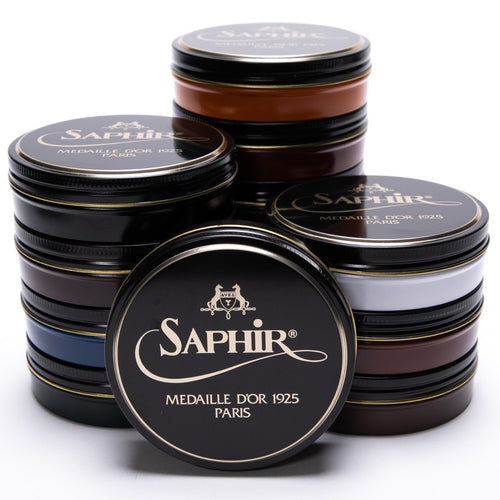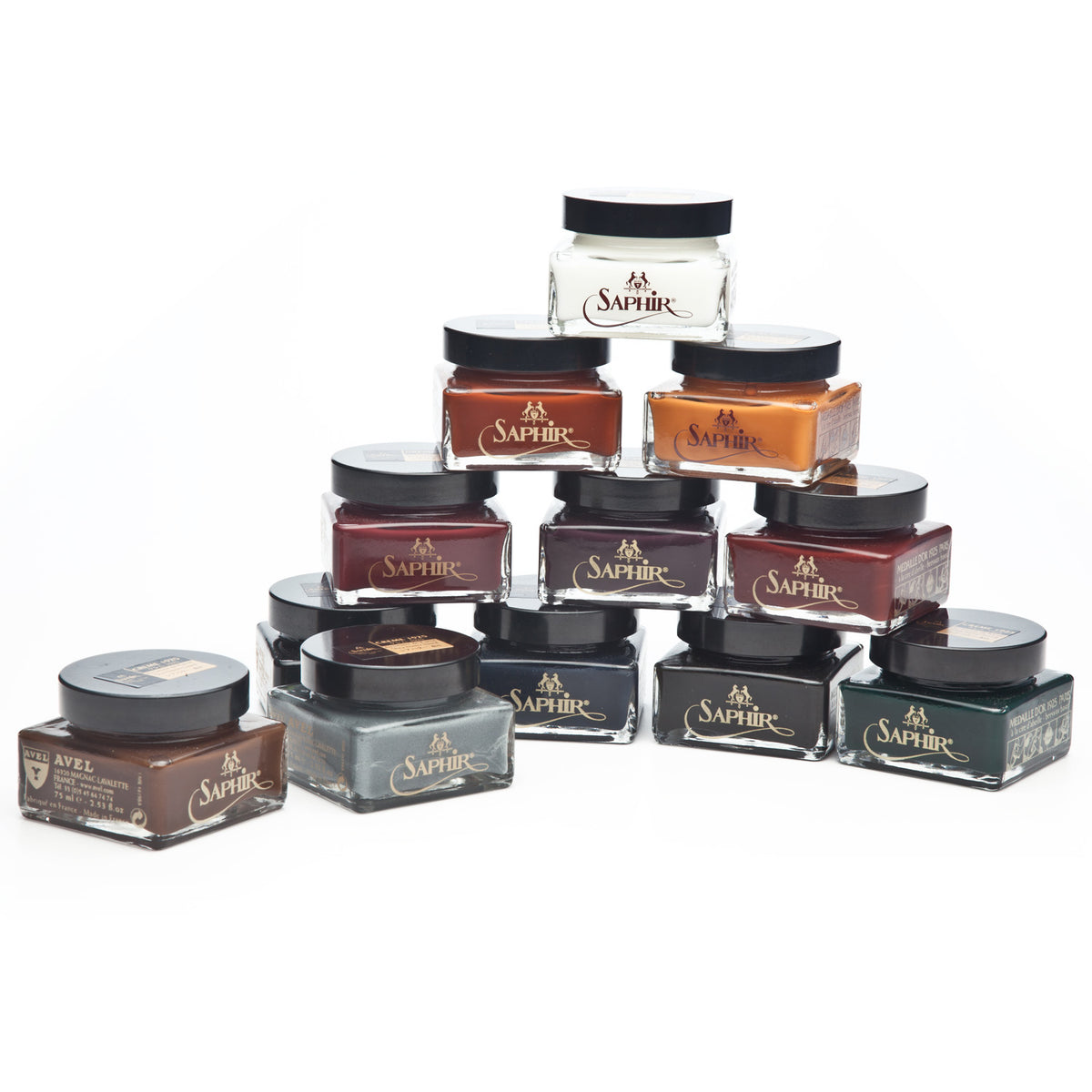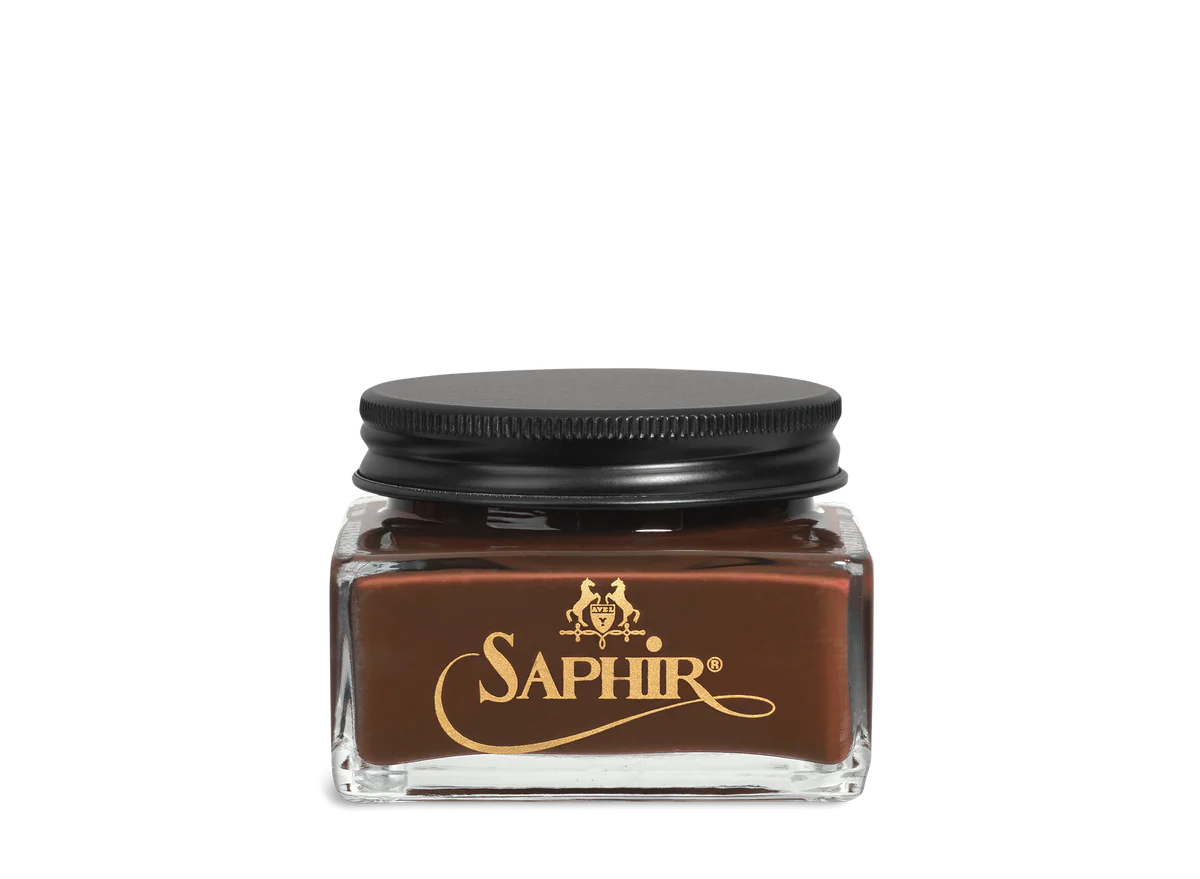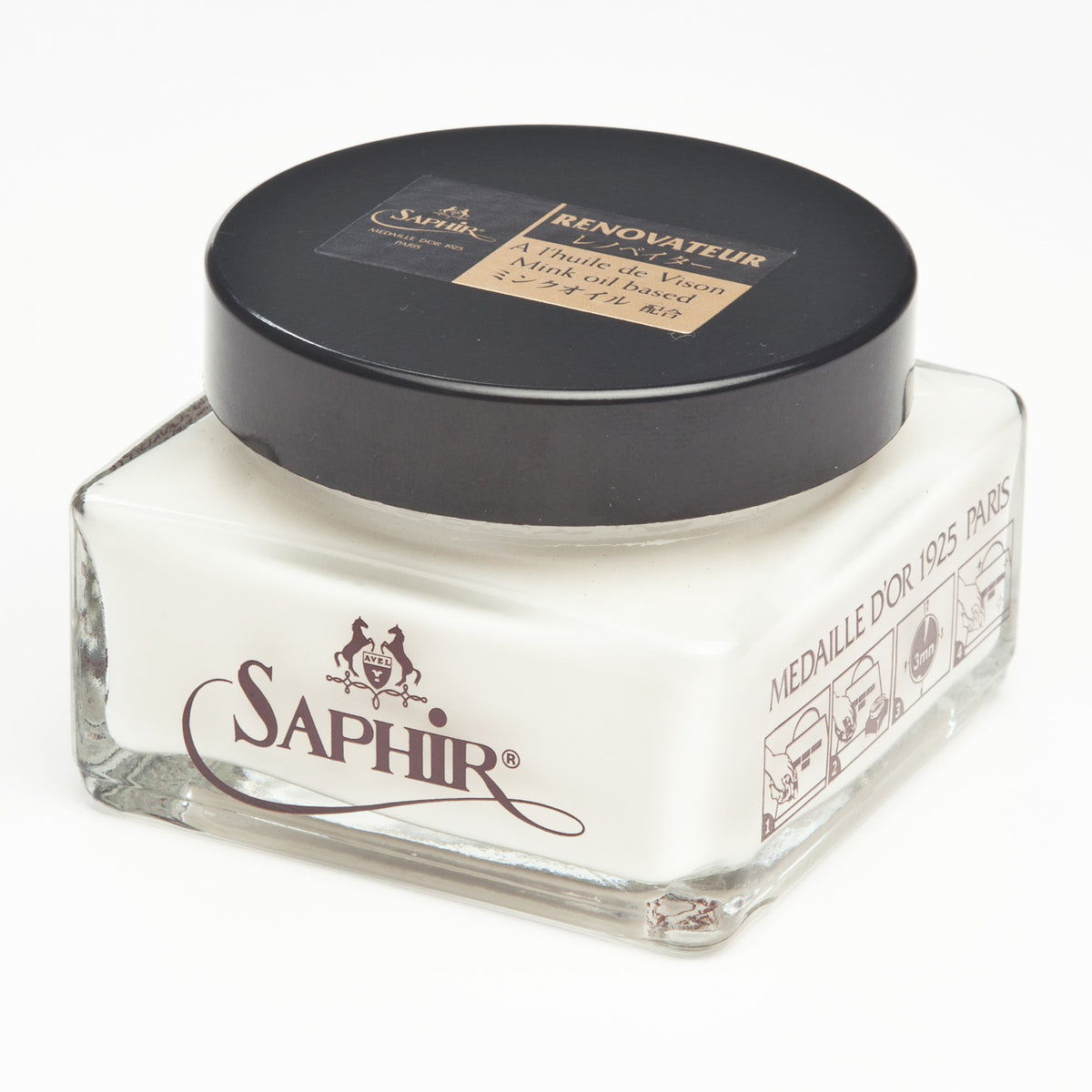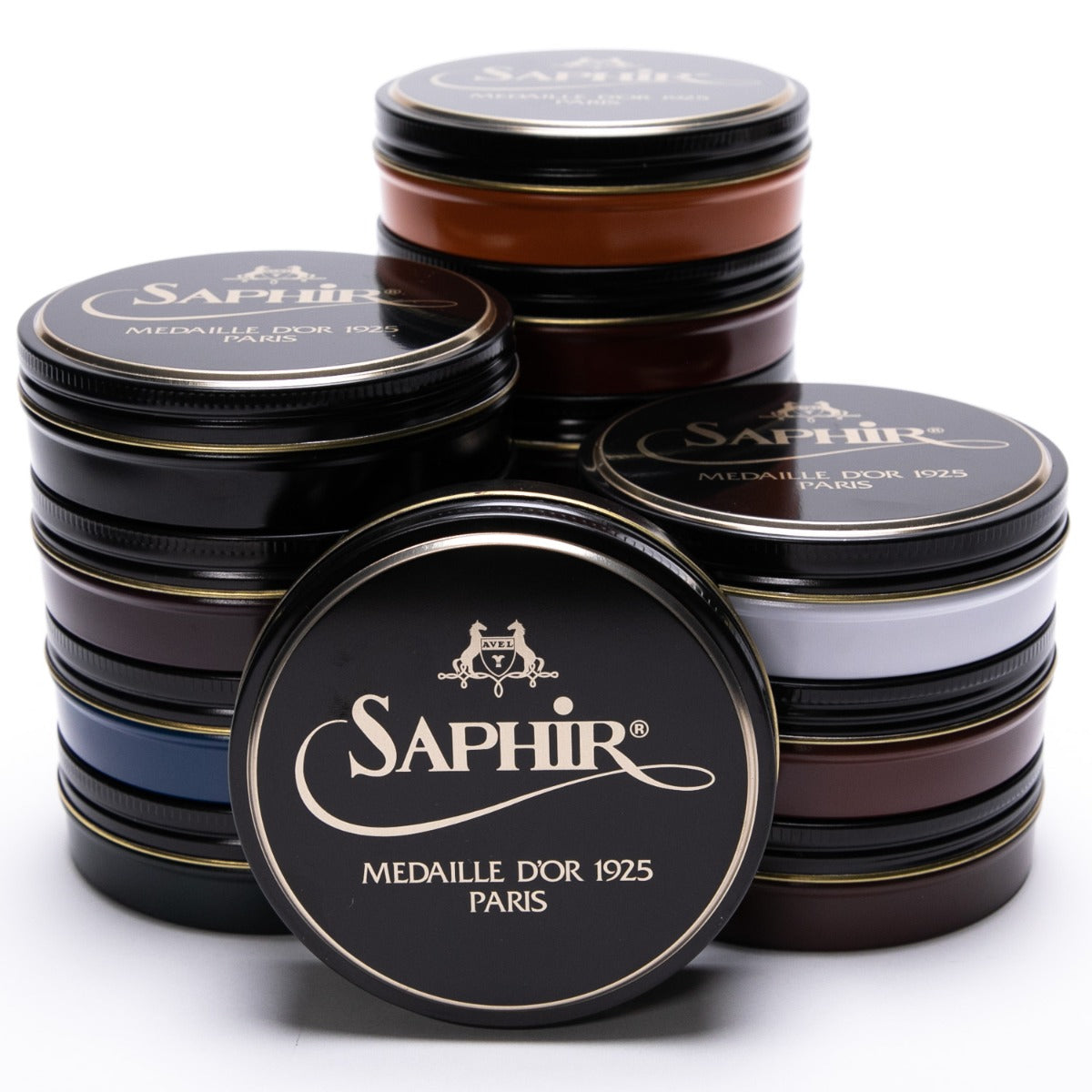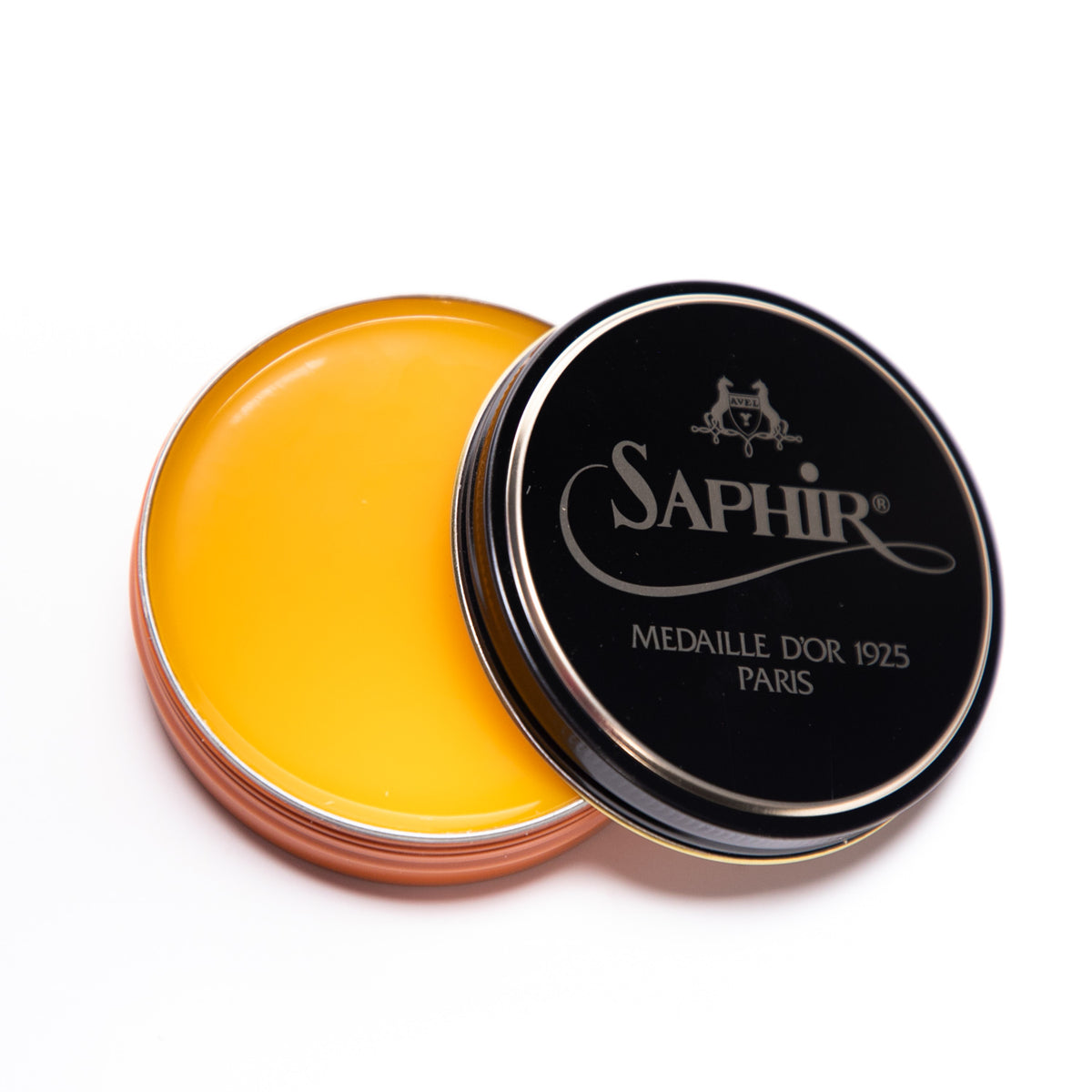Interview w/ World's Best Custom Shoe Maker - Pt 2 - George Cleverley
In the second part of our interview series with the world's best bespoke shoe maker, George Clevereley, George Glasgow Sr. goes over the ordering and last-making process for a new pair of bespoke shoes. Commissioning a bespoke pair of shoes is a truly special experience, especially with a shoemaker such as Cleverley. It is no wonder that so many people who order, Kirby included, become loyal customers for life.
Transcription
Hi, I'm Kirby Allison, and we love helping the well-dressed take care of their wardrobes. The last time I was in London, I had the pleasure of sitting down with Mr. George Glasgow Sr., chairman of George Cleverley, and one of the most elegant and well dressed gentlemen I had the pleasure to know. Mr. Glasgow takes exceptional pride in taking care of his customers and has built George Cleverley into an iconic worldwide brand, well known for making some of the finest bespoke shoes in the world. If you haven't gotten a chance to see Part 1, click the link in the description of this video, otherwise I hope you enjoy watching Part 2 of this series on George Cleverley as much as we enjoyed filming it.
Hi, I'm Kirby Allison, founder of The Hanger Project. We're here today at GJ Cleverley with Mr. George Glasgow Sr., and Mr. Glasgow, thanks for having us.
Welcome. Thanks for coming in.
So we're up here on the third floor of the workshop right in front of the last room and I guess tell us a little bit about what we have here on your desk.
Well, I'm chairman of G. J. Cleverley, and just to explain to you how this operation works, you know, this is done exactly the same as it was 100 years ago. This is a customer standing on, standing up on both feet, which feet are never the same in size, you'll always get a discrepancy - one will be wider or longer than the other. Well we've come to the conclusion that it's actually a rarity to find a a pair of feet today. So from this measurement which is the contours of the foot, the arch of the foot on both feet, and then all the measurements across the foot, I mean the length of a foot. So from this, we make what we call a last, which is made by hand which can sometimes take someone two, three, four days to make. That last, now, has to conform to the measurements that we took here. So then after we are happy with that, then, we may count what we call the official order, which is like this. Every detail is put on the order to exactly what the customer wants. It's actually, it starts with the actually upper color of brown, whether it's dark brown and whiskey, this one is light tan, London tan, or whether the custom is going to go to suede or exotic leathers, in every different material. And then underneath is the lining of the shoe. Customer has the option to have a blue lining, a green lining, many many different respects of colours, you name it. And then underneath it's the style description which tells us all about the top part of the shoe. What style it is, how much design it's got on, so we can fill that in exactly what the customer wants. The line underneath tells us about the toe shape of the shoe, what does the customer want. In this case, this customer here, wants an Anthony Cleverley toe, but customers can have the suspicious square toe, they can have a pointed toe, they can have a rounded toe, really depends on what they want. And at the bottom here, it's either that the customer's TIW is trying well, that's the shoes, if it's a new customer, then we try the shoes on without soles on to see if we are happy or the customer is happy that the fit is OK. If it's an existing customer, we will probably make, cut, and close and finish because we know the last in the first place is right. Then on the back part of the thing, it's got the details of the bottom part of the shoe, which consists of, you know the weight the customer wants on the sole, what sort of stitching does he require, is it close stitching, full stitching. What about the waist of the shoe? What does he want there? Whether it's a square waist, a fiddle waist, a bevel waist, and then it goes to the heels, what kind of heels does the customer want? Is in an inch? Which is unusual to have heels that are lower than an inch, you've got an inch, or an inch and an eight, inch and a quarter. Sometimes we go might go into an inch and 3/8. And then whether the customer requires any tips on the heels, plates. And then this particular customer here wants his initials put on the waist of the shoe. His own initials. This ticket here has been given a number in this cutting book. So it's given a number, and as you can see, they all run in sequence. So then once we've got the number, then this gets entered into here. So we always got a complete record of what soles, what uppers, what style that we've done for the customer go in for years and years. My books are up here and the patents downstairs certainly go back about 30 or 40 years of all details of what the customer's had. So they, the customer will expect us to, if he orders a pair of shoes, they will, whether it's black or brown, he will just point to the style, but he'll expect us to know what weight of sole he wants, what height of heel he wants, what his waists are like, does he have tips? All those sort of things, he would expect us to know, so that's why it's impossible to have too much detail about a bespoke customer. That's real. Because if you miss one nail, then he will tell you about it.
So whenever a customer places an order for a new pair of shoes, do you always go back to the previous pair you made.
100 percent. The last pair, the pair before, we'll probably go back to the last half a dozen.
Really.
Oh yes, just to make sure that something last time might be missed it, might be, just to recheck ourselves all the time, because the shoes are very expensive. So before they go down with the number to be cut, that, in our eyes, has got to be 100 percent correct.
And are you notating the last also? I mean is it common for a customer to have more than one last or do they just have one last that lives with them?
No I mean the chances are some customers have at least two lasts that will vary from lace shoes to slip on shoes. I mean, sometimes, you know, country shoes. Really depends. So if we start with a customer that orders a pair of lace shoes, then we make him a last according to that. If he changes, then after one or two lace shoes he goes to slip-on shoe, then we make another last, because casual shoes are fitted a little bit closer. Because they tend to give a bit more. So we have to make an allowance for that in the second last we make. And then if the customer is maybe a very country guy that likes to wear heavier shoes in the country and maybe with two or three socks, then we have to make another last that will allow for the heavier hose that's put on the shoe.
Yeah I guess that's something that I've never really thought about before, which is your socks make such an important determination as to how the shoes fit.
Yes. Yes.
So in the country, you're wearing hunting socks that are thicker. And if you try to wear the same pair of dress shoes with thick socks, it wouldn't fit.
No, that's right! I mean, sometimes, I don't know how far I can, say, a 1/32 inch, there's a difference between comfort and discomfort. Is a very marginal thing.
So talk us a little bit about a last and how does a last evolve with the customer. I mean talk to us a little bit about this particular last, how has that changed and kind of evolved?
Well, I mean, this last, maybe particularly this last, this last particularly, I would probably say it's about 60. This belonged to Mr. Cleverley. It's about 60 or 70 years.
So that was his personal last?
No, that was a customer's last, which, we do follow still today. And as you can see, people's feet do change. That's real. I've seen it over the 50 years I've been at it. You gained weight on your body, your poor feet get a bit wider, and they don't need to do it that much and your foot spreads a bit and then the arch which is underneath here, tends to drop after a certain age, which mine has dropping like that, and then when the arch drops, you foot gets a little bit wider. So this one in particular, as you can see here, this last now which would be impossible to replicate, you can see what time's done with this last. They've added bits. We've altered the last to accommodate his changing foot over the years. On the instep here, he seems to have developed a little bit of an instep bone here. The toes have got a little bit on the hammered side. On the left side, it's a little bit more so on the right. So these are things that we have to take into consideration, because people's feet do change, there is no question about that.
If you were to take measurements today of that same customer, could you arrive at that last, or?
Well, you say that, Kirby, but we have tried. That is very, very difficult, that's why we're reluctant, the foundation of the last has always be right so that's why we're reluctant to change it because these little bits and knobs here in that, the height of this, it's so difficult to ever reproduce that exactly to that.
So you would prefer to see a last evolve with the customer.
Yes.
With being built up, modified, taken down, versus starting over and creating a new last.
Exactly, yeah. When the last is really not usable in production, we've reluctantly done a new one. And we've got to go back to the fitting stage and it's always been not as successful as doing it this way. Really?
Yeah.
And when would a last not be useful anymore?
Well, I mean, when you wrap the upper around and it won't hold. This is all right here, because we still got the holes, this is the insole that goes into the shoe. So when that holds on to the thing and then you can put the welt around it so you know it can be-
Really, I mean, a last like this one's got a bunch of holes on the bottom.
Yeah, that's how many pairs of shoes he had made, there have been a lot made on that.
But at a certain point, I guess you can't nail. Because you've nailed too many times
Yes that's right.
Yeah we can use this sort of wood filler. So if this customer orders again we can use wood filler now, to repair this and we'd sooner repair, because we know it's basically right than try and reproduce this again.
And I guess this is a great example of how, really your shoes get better with time and the longer that you've had the relationship with your shoemaker, right?
Yes.
As you guys get to know one another, as you wear more and more pairs of shoes, it's kind of like with your tailor.
Yeah.
That relationship only gets better.
Correct. Correct. People have shoes made, and it's the older shoes, people bring in shoes here for repair that might be 20 or 30 years old. And it's not really that I don't want to order new shoes, but they've become old friends. And they're just so comfortable in them, they'd sooner pay, in some cases, a hell of a lot of money to have a shoe repaired, because, the repair to them and it's a friend, it's like an old pair of slippers.
Yeah.
So they'd sooner do that than actually going through the pressures of having new ones. They will always have new ones made, but the older shoes are normally their favorites.
Do you think that there's a different relationship with a pair of bespoke shoes than a pair of ready-to-wear?
Oh yeah definitely. I mean I think people would, if you've paid enormous amount money to have a pair of shoes made, I think you'd look after them and care for them, more so than a ready-made pair of shoes, and I think that's the question to most things.
So how many lasts do you reckon you have in the last room?
The last room here, we've bought probably about 3000 in there. As you can see behind me, I'm in the last room, where is what I call the bible of our company and our foundation. This is where it all lies and this is where it happens. This is the most valuable room in the house. Every customer in here has his own block of wood. We are looking at approximately about 3000 lasts in this room. They normally go up here when they're resting. On customers we haven't got orders in house for, and then, some of them, when the room gets a bit too many lasts then we have to store them in repair units that we have down in the country where we have maybe another 15 hundred or 2000. So we keep a last, generally speaking, for about 10 years. So if we look around here you can see these come around in a sequence where they numbered and then they finish up in the center here. And you can look around and you'll see some are new lasts and some are very old lasts some of been with us for many many years, and some of the ones like this one is a particularly new last. So we have an array of different sort of assortments of last here which is what bespoke shoe making is all about. As you can see, some of them are totally different in the length of the shoe, and in the width of the shoe, that's what basically shoe making is. Nothing is the same, no one's feet is the same. You know, you know the customer, you know them personally, you know that if he orders, which some times people are not in a position to come and see you all the time. But they know they can phone you and then tell you what they want, you're going to get what they want, because the last will be the fit. The pattern, you'll know what they're about. From the styles of shoe, the colors of shoe, so if they can't get to the shop, or they can't get to visit us on one of our trunk shows, then we can work out from a telephone call what the customer is looking for. And he'll get a good fitting shoe because the last is there. Style-wise, the weight of the shoe, they are all things that he'll get, because we have all these records that will indicate that to us. But that's what the customer really enjoys. That's why there's no flashiness to us because that doesn't go with handmade shoes. It's archaic, the shop's archaic, the industry is archaic, so that's what we try and achieve, and that's what makes people really want. The amount of people that come in and say "wow what a lovely shop". Sometimes we think it needs to be refurbished, and do this and do that, and then we get so many people that say "Wow! What a lovely shop". This is what handmade shoe making should be about. A very prestigious Englishman described businesses like ours to me. A number of years back, he said we used to be number 12, now we're at number 13. I mean he said he came to number 12 and it was closed because we moved to 13. And he then he looked and he said "Oh"! And I said to him "sorry sir" and then he said "Oh George, for a minute, I thought you'd gone out of business because I went to number 12". I said "well, sorry to give you that shock, but we're still around". And then he said "George, let me just tell you what I think and what a lot of customers also think about Cleverley". So he drew a circle, and in the circle, he said "you know these bakery shops you see cakes that are sliced into little triangles that people have a piece of cake like, birthday cake, wedding cake, whatever". So I said "yeah". So he showed me this cake that he'd drawn. And then he said "see, all these triangles, George, are to do with your customers. In one triangle, is the shoemaker, one triangle is his shirtmaker, one triangle is his tailor, and then his dentist, and then his doctor, and then his foot guy, and they fill up the thing. So if something happens to one of those slices in the cake, that gives people, a lot of your customers, a big problem, because they don't have to think about this in their life, they know if they come to you they get the shoes they want, the fit they want, they got a tailor. So that's, you know, and that's why I got a massive shock. I got to replace my shoe maker, but luckily for me, you'd only moved next door, so I'm happy". But all you got to do is try and keep exciting apprentices. We've got some touchwood at the moment that we fostered and they're on the premises, some of them are not, but they're doing very good and we're very very hopeful that they're going to stay to keep this whole thing and I think they will. But it can sometimes be frustrating because it is a craft and we just want to hold it on. I mean, there is more and more ready-made shoes, but as I said previously, if people haven't had bespoke, they buy ready-made, which I'm sure you have as well. What you do with a ready-made shoe, you push it out. This is never going to fit you like a hand-made, so you're going to push it out to the actual, to your foot. When you're young, like you, it won't hurt you, because you're young and strong you want to get out in the world so you just push it a bit, push it a bit, and then it comes right. But then, all of a sudden you get older, you start to see some of these bumps and lumps and that's from wearing shoes too small. So what happens then, over a period of time, and then all of a sudden you sort of have a pair of handmade. And then, when you put them on, they're massively comfortable. Wow. What have I been missing. Because they're right from day one, you haven't had that torture of pushing them out and making them a bit bigger. So your foot can be comfortable inside it. So there is a big difference between handmade and ready-made, but if you haven't had he handmade, you never know that, but then if you have it, then it's an expensive pill.


